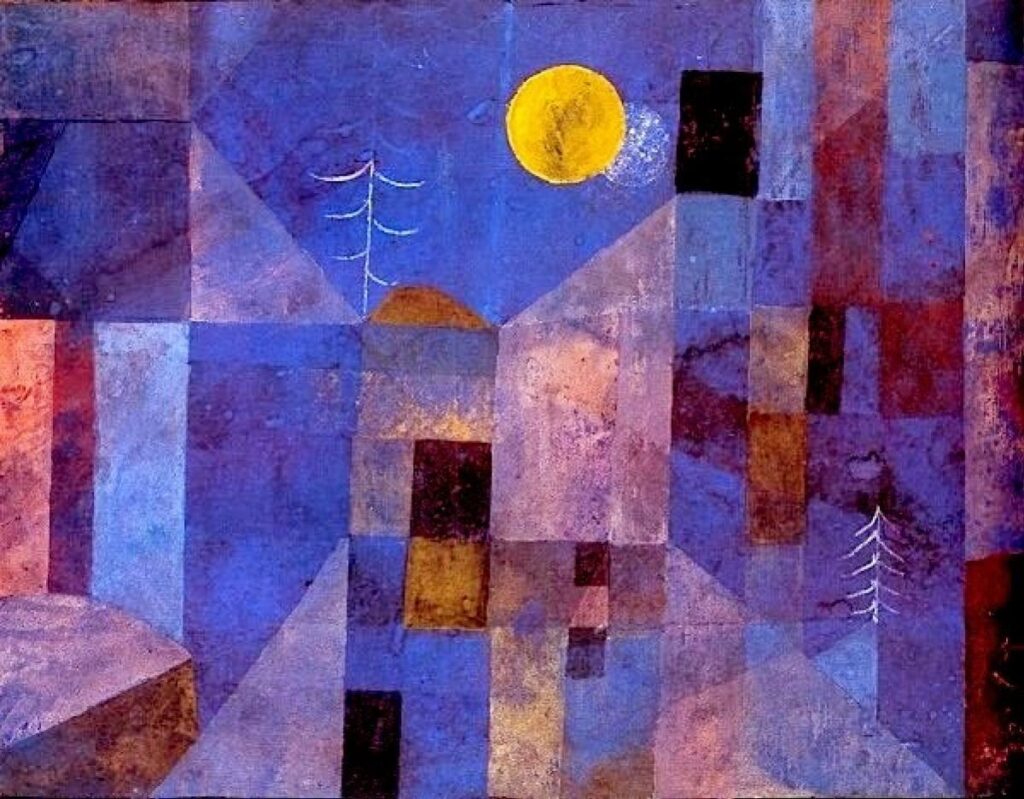Like being, time is said in many different ways. A day on Venus, for instance, lasts 243 Earth days, which means that, supposing one could see a full Moon from Venus (which is not possible, as when the Moon is full it is opposite to the Sun, while Venus is closer to it), supposing one could see it (though) one would see it only once in an Earthly year. Furthermore, two Earthly years amount to three Venusian days, plus one additional Earthly day. In other words, the comparative count proves once and again irregular – as elusive, therefore, as the Moon’s appearance on Venus’s sky.
Now, the same occurs with Bach’s Goldberg Variations (BWB 988), which, arguably, is more of a “moonlight sonata” – if beautifully Venusian then, for the sake of Baroque’s complexity – than Beethoven’s Piano Sonata No. 14 in C-sharp minor, Op. 27, No. 2. Yet it is, like Beethoven’s, quasi una fantasia : the fantasia of an evanescent Moon.
Take the Aria. It appears and then disappears till it reappears again in fine\da capo. But how does it disappear? In two complementary ways. First, it disappears as such – in the sense that we do not hear from it again until the end, when it reappears like an intangible reminiscence. Secondly, it disappears in the sense that it is, additionally, submerged in its own depths.
For, obviously, the Aria is not the melody played by the right hand. The truly relevant stuff, in respect to which everything else is an ornament (a lovely, ethereal ritornello), is played by the left hand; that is, the truly relevant stuff is, as often in Bach, the ground.
(I remember that, as I child, I would listen to the Aria once and again… once…twice… endlessly, trying to exclusively hear the ground, until the right-hand melody finally vanished: I could hear it, of course, but like a delicate bird’s song in the distance.)
Why, though, is the ground so very relevant in this particular case? Because it is ultimately on the ground (rather than the melody, as one could expect) that Bach builds the subsequent thirty variations. Put otherwise: they are not variations on the right-hand melody, but are variations on the left-hand ground. Again: the former one literally disappears until it reappears, as a reminiscence, in final bars of the piece. But then again, it reappears only as a reflected reminiscence, reflected upon the ground. Twice reflected. Thus, twice moonish.
And meanwhile… the variations round. Do they turn around, instead of merely following, one another? Precisely! First comes a little dance piece (or something of the like), then an arabesque, and then a canon, and this tripartite structure repeats itself circa ten times. Irregularly, of course; or, in other words, almost regularly. Variation: Bach, the Baroque, and infinitesimality.
Hence, we have:
the Moon (reflected) + (approximately:) 10 x {1, 2, 3} + the Moon again (twice reflected)
In turn, the variations display different degrees of deterritorialization (1 minimal, 2 maximal, 3 half way between both extremes), for the dance pieces shelter what springs out of them, be it almost without measure (as it happens with the arabesques) or by multiplying its own reflections (as the canons do).
In short, Bach’s Goldberg Variations present to us a moonish landscape that becomes almost cubist, thereby prefiguring The Art of the Fugue (BWV 1080) with its incomparable Jupiterian mass. Probably, however, speaking of cubism is an unnecessary anachronism, since Bach was well acquainted with Leibniz’s monadology,[*] in which modal refraction plays a key role, as well.
Hence, each dance piece, each arabesque and each canon behave monadologically – or what amounts to the same, fractally but irregularly. Meanwhile, the Aria misbehaves like a playful Venusian moon.

Paul Klee, Moonlight (1919). Public domain
[*] See Arthur Dony, Leibniz et J.-S. Bach. Métaphysique et pensée musicale à l’âge baroque (Liège: Presses Universitaires de Liège, 2017).
C.
